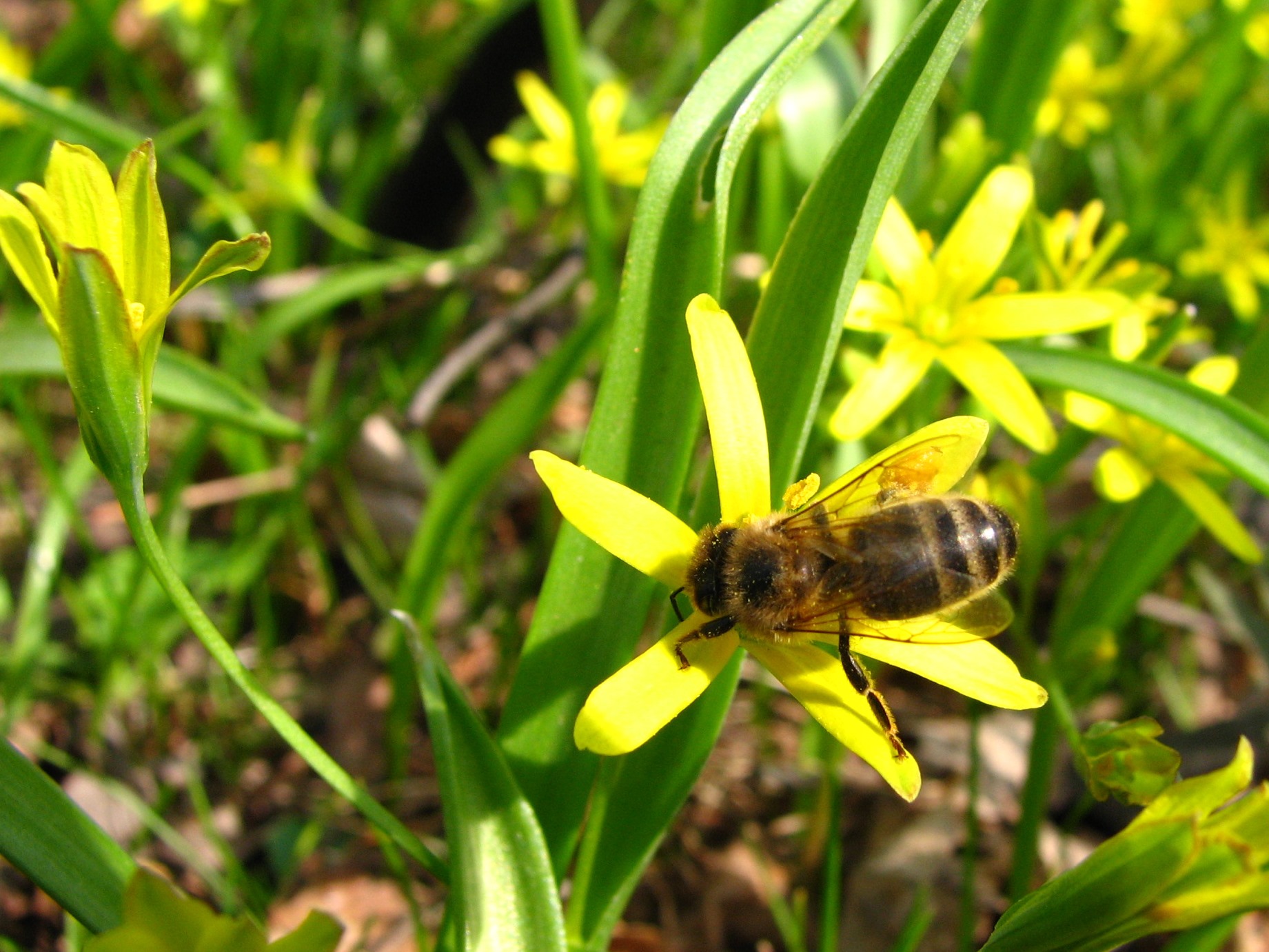Pollinating insects (Nature, WPM)
Wilanów gardens are a paradise for pollinators. Already in early spring, patches of goldwort, anemones, grainworts and cocorices bloom in the landscape park. On sunny spring days, you can observe various insects pollinating flowers using nectar or pollen. Commonly known pollinators are bees, bumblebees and butterflies. In the Wilanów park you can encounter many species of butterflies, for example: the peacock butterfly, the common butterfly, and the white-tailed butterfly. Butterflies also like to eat flowers planted in flowerbeds, especially in large numbers they can be found on heliotropes, which bloom in summer and autumn. Flower beds are not the only places where we can observe pollinating insects. Also, some trees are a valuable source of food for them, especially linden trees, on whose flowers we can often observe busy bees. Little-known pollinators that we can observe already in early spring in the Wilanów park are rock flies. Rock flies are very interesting insects. They look a bit like a combination of a bumblebee and a mosquito. The first thing that catches the eye is the long mouthparts resembling a mosquito’s proboscis, but its use is closer to the hummingbird’s beak, as it is used to drink flower nectar. Just like the exotic birds mentioned above, rockers can hover in the air next to the flower from which they are feeding. Pollinators are an essential element of the environment. Thanks to their activity, insect-pollinated plants produce fruits and seeds. Thanks to bees, we have honey, and the presence of beautiful, colourful butterflies will certainly make the time spent in nature more enjoyable.
Text: Julia Dobrzańska, PhD
